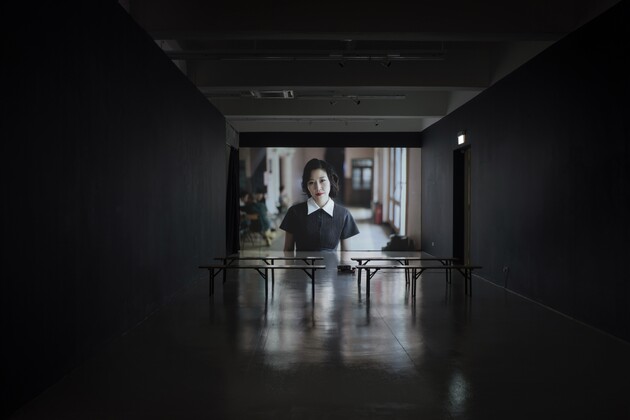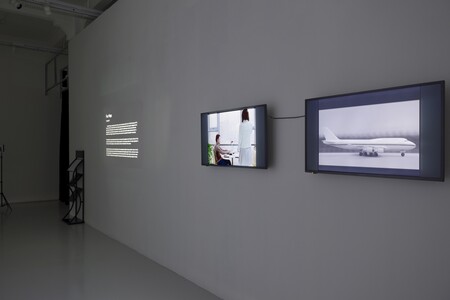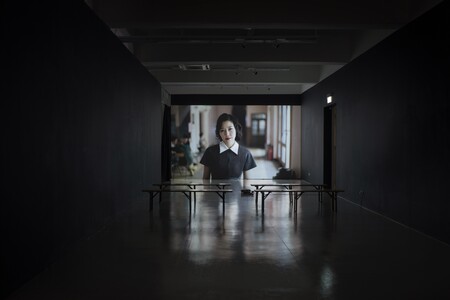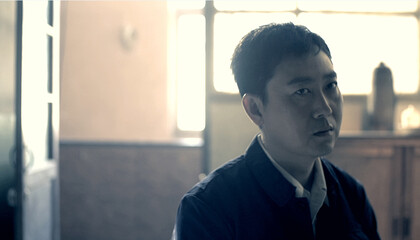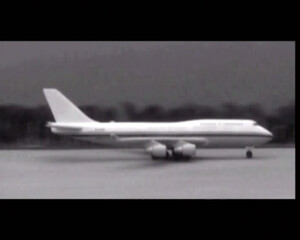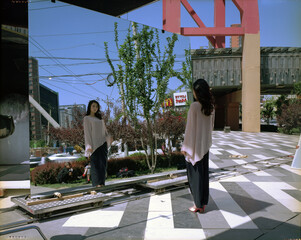Solo Exhibition ShanghART Singapore, Singapore
Hours: Wednesday to Sunday, 11am – 7pm, closed on Public Holidays
Address: 9 Lock Road, #02-22, Gillman Barracks, Singapore 108937
ShanghART Singapore is pleased to present Shifting Times, Moving Images, a series of screenings by artists Zhu Jia (b. 1963), Chen Xiaoyun (b.1971), Liang Yue (b.1979), and Lin Aojie (b.1986). A total of 28 carefully selected videos presents the artists’ respective investigations into the medium within their individual practice. This four-part series is an exploration into the distinct ways in which each artist utilises video, bringing together various narrative style and perspectives.
Since the popularisation of film in China in the 90s, video production has found its way into the creative process of Chinese artists as they experience, explore, and express themselves with the new medium amidst the larger historical framework. Camerawork, actors, film sets, and post-editing feature heavily in video works of Zhu Jia, the most senior of the four artists. His practice saw a time where moving images was first introduced to the public through the film industry.
As video art gained ground, the mode of narration diversified; Chen Xiaoyun’s works construct a linguistic bridge between marginalised bodies and symbolisms while using video to document the uncomfortable clashes created by the process. Departing from the traditions of scripted acting, Chen casts non-professionals such as students, buskers, and workers to perform conceptual gestures.
This shift towards spontaneity and antinarrative continues in the videos of Liang Yue, whose generation coincided with an era of exponential increase in digital recording and camcorder ownership. With this increased accessibility to video-making, moving images becomes part of the mundane. It is perhaps in this spirit that Liang utilises video to capture the beauty of insignificance and the absence of plot. Her massive body of works depicts poetic scenes intentionally free of context, climax, or suspense.
In recent years, videography has further integrated into our everyday reality through mass media and information technologies. Lin Aojie, the youngest of the four, uses video to capture digital methods of image creation; there is no longer a camera, the machine on which the image is created is also that which records and replays. Drawing references from pop culture and motifs of the digital age, Lin turns his focus inwards towards the inner psyche of contemporary art practitioners.
From low-resolution black and white recordings to digital videos shot on a smartphone, the artists engage in dialogue with the evolution of their tools and the new possibilities of expression in moving image.
The selection spans across almost two decades and a vast majority of which has never been shown in Singapore.
The first instalment of the series will feature works by Zhu Jia, who has been widely recognised as one of the pioneers of video art in China and is central to the development of the medium in subsequent generations. His oeuvre roughly coincides with the height of globalisation in the nineties, and has been regarded as a ‘critical commentary in real-time of transformations in Chinese society.'
Complete with costumes, sets, and some crafted dialogue, Zhu’s films appropriate the tradition of studio productions. However, the illusion of the moment is always broken by the intrusion of the cinematic apparatus itself; stage lights caught in the frame, a mannequin is revealed, a mirror being pulled back, or the backdrop rolled away. Each time the narrative seems like it is about to begin, the scene comes undone. The characters, and the audience, become suspended in these precarious moments between acting and being, imagination and reality.
About Artist
As a pioneer of the practice of video art in China, Zhu Jia always tries to capture ordinary scenes through distinctive methods of practice. In his 1994 piece “Forever”, which has participated in several important exhibitions, Zhu attached a camera to the left wheel of a bicycle. The artist rode this bicycle over 10km around the city of Beijing, catching images of daily life through a truly unique perspective. In the work “Did they have sex?” he held up a sign, posing this very question, in front of arbitrarily chosen couples on the street and took photos, asking the viewer to generate their own answer. By establishing these fictitious relationships, the overall artist discusses different people's attitudes towards the sensitive issue of sex in society.
Zhu Jia, born in 1963, Beijing. Graduated from China Central Academy of Fine Arts in 1988. He lives and works in Beijing. Selected exhibitions include Zhu Jia:Faraway Friends, Modern Art Base, Shanghai (2020); Be Together for Today, DRC No. 12, Beijing (2017); Art and Chine after 1989: Theater of the world, Solomon R. Guggenheim Museum, New York, U.S.A. (2017); Scarcity& Supply, The 3rd Nanjing International Art Festival, Baijia Lake Art Museum, Nanjing (2016); 3rd Bienal de Montevideo 2016, Montevideo, Uruguay (2016); That has Been, and May be Again , Para Site, Hong Kong (2016); Displaying Fragments , Ten Years of OCAT (2005-2015) , OCAT, Beijing (2016); Art Changsha 2015 , China: Bridges to History, Technology, Poetry and Grace, Changsha Municipal Museum; Tan Guobin Contemporary Art Museum, Changsha (2015); Critical Pervasion, Shanghart Gallery & H Space, Shanghai (2015); Mobile M+: Moving Images, Hong Kong (2015); Landseasky, Revisiting Spatiality in video art, OCT Contemporary Art Terminal, Shanghai (2014); Out of the Box, The Threshold of Video Art in China (1984-1998), Guangdong Times Museum, Guangzhou (2011).
More Pictures:
Shifting Times, Moving Images III: Liang Yue 07.17, 2021 -08.29, 2021
Shifting Times, Moving Images II: Chen Xiaoyun 06.19, 2021 -07.04, 2021

